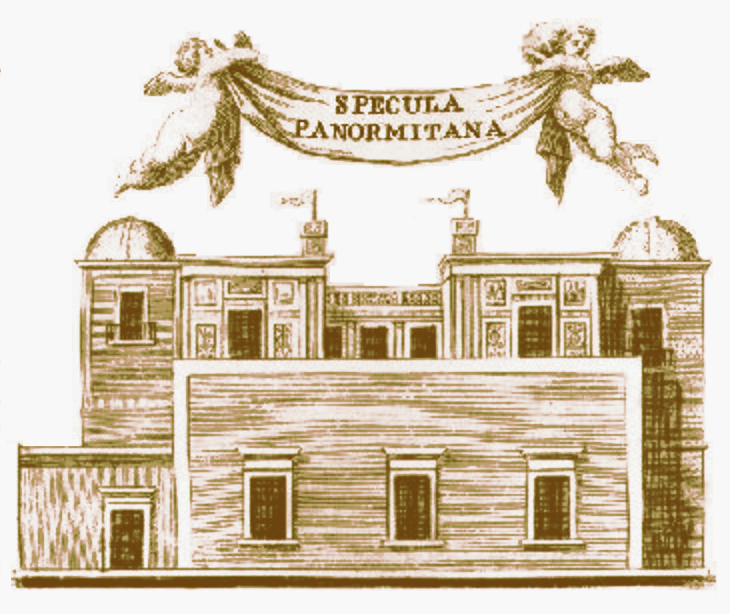
OSSERVATORIO ASTRONOMICO DI PALERMO GIUSEPPE S. VAIANA
ON THE HISTORY OF THE PALERMO ASTRONOMICAL OBSERVATORY[*]
by
Giorgia Foderà Serio

In 1790, the Palermo Observatory was established as the National Observatory of the kingdom of Two Sicilies, a kingdom that included essentially all of Italy South of Rome. It was the National Observatory not because it was the first and only Observatory to have ever existed in this part of Italy[1], but because it was the King that gave his consent, that is, secured the necessary funds for the erection of the building, the provision of instruments and staff, and the prosecution of long term research programmes.
It may seem strange that such an Observatory was built in Palermo rather than in Naples. Naples was in fact the Capital of the kingdom, and certainly the center of whatever scientific life was active in this part of Europe. It was the King's and Government's residence, with obvious consequences in terms of expenditures[2].
Palermo on the other hand, and more generally Sicily, had reached, in the second half of the eighteenth century, their lowest level, as far as science is concerned. This was particularly true for Astronomy. It is impossible to find a single work on Astronomy, let aside gnomonics, by a Sicilian author published during the XVIII century before 1790. To speculate on this point would take too long. I can only suggest to keep in mind that, among other factors, the Inquisition, active in Sicily from 1601 to 1782, undeniably played a major and tragic role[3].
Further, Sicily was run through a Viceroy, whose decisional powers, especially concerning expenditures, were extremely limited. This notwithstanding, the Palermo Observatory was established and, since its very inception, and for a period of about thirty years around the turn of the century, rivalled, for equipment and scientific results, the most venerable institutions of its kind. In those specific sociological, political and financial conditions, this could hardly be due to anything but, shear luck. I mean that a number of circumstances, each of which was not by itself determinant, clustered together, at just the right time and right place, to produce such a result.
The first relevant circumstance was the banning of the Jesuits from the kingdom in 1767. I must clarify this point. I am by no means giving or implying a negative or positive judgement on the role played by the Jesuits in the dissemination and progress of science, and of Astronomy in particular. I am just stating a fact: the Jesuits in the Kingdom of the two Sicilies retained, until 1767, the monopoly of public education up to University level. For this reason, the ban against their order caused the immediate collapse of the entire educational system i.e., on the very same day the ban was promulgated, all schools in the kingdom were closed.
This forced the Government to assume responsibility for the organisation of public education. The Government was not at all ready to face the emergency it had caused. Nobody had been charged to prepare a reform plan. The only action taken, at first, was to reopen the old schools staffing them with make-shift personnel, and to use the income of the confiscated Jesuit estates to run them. For quite a few years public education was thus a complete disaster. Nevertheless, things slowly got on the move.
As for higher education, in 1779 the "Accademia dei Regj Studi" was established, which was to become, in 1805, the University of Palermo. This was the first success obtained by a small but influential reformist party that found strong and active support in Domenico Caracciolo and Francesco D'Aquino Prince of Caramanico, the most enlightened Viceroys Sicily has ever had. The aim of the reformist party was to create in Palermo a University up to the standards of France and England, in which the teaching of "things," that is practical and scientific disciplines, had to be privileged over the teaching of "words."
Experienced teachers and scientists for this new University were eagerly sought, and they had to come from "abroad," to bring into the scientifically deprived Sicily their experience, their knowledge, their new ideas. In line with this programme, they planned for structures like a Botanical Garden, a Theatre of Anatomy, and an Astronomical Observatory.
Astronomy was in fact thought to be central in this project, if only because of its practical fallout, from the improvement of navigation to geodesy and geography. Suffice it to mention here that, up to 1791, when Piazzi re-determined it, the latitude of Palermo was known with an error of 4 arc-minutes, an incredibly bad value for the time, not to mention geographical maps[4].
The large scale programme set up by the Deputies of the Accademia was a failure: countless approaches were made to try to hire reputed scientists like Spallanzani, for the chair of Physics, or Lagrange for that of Mathematics. All of them politely refused. The main reason for such refusals is efficaciously expressed in this comment by D'’Alembert:
Je n'ai pas oui dire que Mr de la Grange songe à quitter Berlin, où il me paroit qu'il s e trouve bien, mais comme je n' ai pas très souvent de ses nouvelles, j'ignore ses dispositions. Je doute que le Marquis de Caracciolo trouve à Palermo de quoi composer une acadèmie. S'il y appelloit Mr de La Grange, ce seroit un President sans conseillers [5].
Sicily was considered, and rightly so, a scientific periphery.
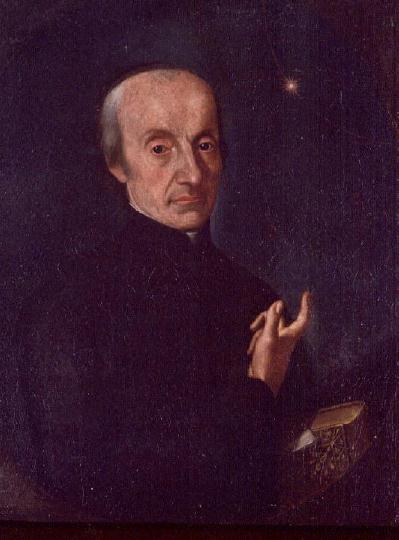
As for Astronomy, Barnaba Oriani, Astronomer in Milan, was invited and, like the others, declined the offer. Oriani's refusal provided a unique opportunity for Giuseppe Piazzi (1746-1826). When he was appointed to the chair of Astronomy early in 1787, Piazzi, already in his forties, had only made a mediocre career as a teacher of Theology and Mathematics, migrating from one city to another. He had taught in Ravenna, Genoa, Rimini, Rome and Malta, before landing in Palermo in 1781 as lecturer of mathematics. Extensive searches have indicated that he had not published anything, neither does it seem that he had any interest in research. More than that, he was not an astronomer, not even an amateur. Yet, in a matter of a few years he became one of the most respected astronomers of his time.
I have, for some time, tried to find a rationale for his sudden success, but I have found none. I can only say that, as soon as he was charged with the project for the Observatory, he showed a strong drive, and started on the right footing, with a keen insight for the most appropriate project to be carried out at the time.
He left for a three year stay in Paris and London. From Paris, where he arrived at the beginning of April 1787, he wrote to his friend Prince of Torremuzza a long letter in which he neatly stated his programme:
[...] esaminerò da principio quelli Osservatorj tutti di Parigi, che non son pochi, osserverò io stesso, prenderò cognizione degli Antichi, ed infine assisterò all'assemblee dell'Accademia delle Scienze, ove siffatte materie vengono trattate. Dopo di ciò unitamente a M.r Lalande M.r Condorcet, e Cassini si tratterà di quanto sarà necessario per istabilire codest'Osservatorio che certamente potrà essere uno de' migliori[6].
After seven months in Paris, during which he gained the esteem and friendship of the most famous astronomers of the time, including Lalande, Messier, and Cassini, he moved to London where, in Piazzi's words, he was
graziosamente accolto dal Dr. Maskelyne che mi usa alla giornata molte cortesie e mi procurerà la conoscenza de' migliori artefici e di Ramsden principalmente[7].
Piazzi had, in fact, already made up his mind: for the new Observatory he was going to have only the best, and best at that time meant Ramsden. Now, to obtain an instrument from Ramsden was not an easy task. His disregard of time and commitments were in fact legendary. Nevertheless, Piazzi obtained from him, in less than two years, a complete set of astronomical instruments, including an instrument which was considered at the time le plus bel instrument d'Astronomie qu'on ait fait jusqu'ici. [8].
The Palermo circle is relevant to the history of Astronomy because it is the first example of a new generation of astronomical instruments: namely instruments with circular scales. In a matter of a few decades around the turn of the century, circular scale instruments replaced the traditional quadrants and transits, allowing a substantial increase in the accuracy of astronomical measurements.
Back from London, in August 1789, Piazzi immediately started to search for a suitable place to build the Observatory. This he found on the Norman tower of Santa Ninfa of the Royal Palace. Viceroy Prince of Caramanico was instrumental in obtaining from the King both the permission to build the Observatory over the Royal Palace and, most important, the necessary funds.
Illogical as it may seem, King Ferdinand at this point was not at all eager to have the Observatory built. He maintained that Piazzi could be content with the beautiful and expensive instruments he had purchased. What else did he want? Why an Observatory? As late as February 4th 1790 the King ordered that, if an Observatory had to be built, the funds had to come from Piazzi's salary![9]. It took all of the Viceroy's consummate diplomacy to persuade the King to secure the funds for the building, and on July 1st 1790 finally the King's consent came. At this point Piazzi got immediately on the move, perhaps in fear that the King might change his mind and, within eight months, in February 1791, the Observatory was completed.
The plan of the Observatory reflects both the tightness of the budget obtained from the King, and Piazzi's eagerness to have the Observatory built anyway. It included a room for Ramsden's circle and a meridian room joined by a gallery where portable instruments were stored. Living quarters for the astronomer and his assistants were obtained at a lower level by adapting pre-existent rooms.
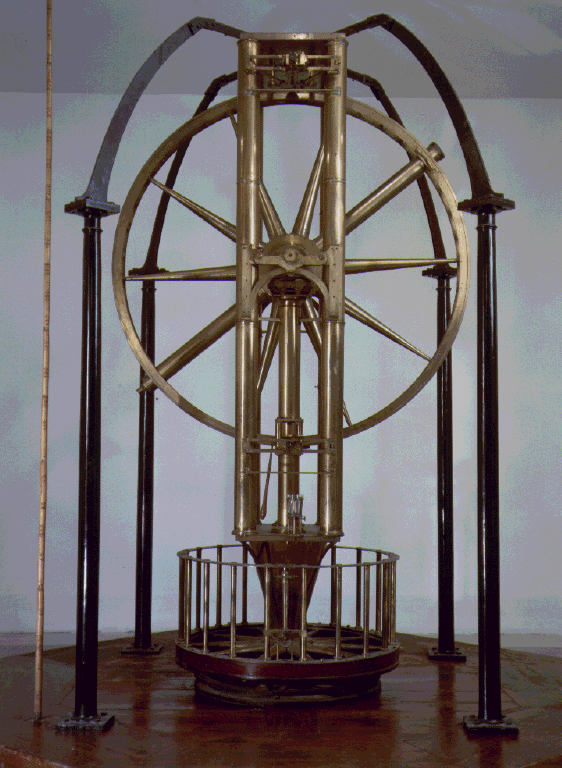
Encouraged by the possession of the 5 foot circle, whose accuracy was believed to be much superior to that of any other instrument in existence[10], Piazzi centred his scientific programme on the accurate measurement of stellar positions. His observational technique implied that each star had to observed for at least four nights, before its position could be established. This painstaking work resulted in the publication, in 1803, of his first star catalogue. For this work, received by Lalande as "the most important astronomical work published since a long time," he was awarded the prize of the French Acadèmie des Sciences, and was elected to the Royal Society.
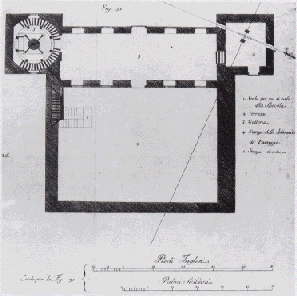
The discovery, January first 1801, of Ceres, the "planet" long sought for between the orbits of Mars and Jupiter, came as an unexpected reward of his observational technique. In line with his programme, Piazzi investigated at length proper motions and parallaxes. His commitment to the measurement of proper motions resulted, over the years, in the publication of several valuable catalogues of the proper motions of hundreds of stars.
It is perhaps little known that in 1806, well before the appearance of Bessel's famous paper "Uber den Doppel-Stern N.ro 61 Cygni", Piazzi had already correctly determined and published the flying star's large proper motion, pointing it out to the astronomical community as a good candidate for parallax measurement[11].
His scientific career culminated in 1814 with the publication of his second star catalogue, which is not an augmented edition of his first one, as it has been often stated. Indeed, as Piazzi himself pointed out, it is a completely new catalogue. For this work he was again awarded the prize of the Acadèmie des Sciences.
Piazzi died in Naples in 1826. To the capital he had been summoned in 1817 by King Ferdinand with the task to bring to completion the Naples Observatory, a project that, in the preceding 20 years, had consumed enormous amounts of money with no results. In this task he succeeded again, and in 1820 the Capodimonte Observatory was officially opened.
The success of the Palermo Observatory was strictly tied to Piazzi's person. This was clear to the astronomical community of the time. In 1824 Baron Franz Xaver Von Zach, in a letter to Piazzi wrote:
[...] Dans toute l'Europe (Greenwich compté à part) je ne connaissais que trois observatoires vraiment utiles, celui de Palerme, de Königsberg et de Dorpat, ou pour miex dire de Piazzi, de Bessel et de Struve. Mais helas Monsieur ! Sic transit gloria ! [...] J'ai esperé dans un tems qu' elle traversée la mer, et qu'elle a passée dans l'Observatoire de Miradois. Vain espoir ! Avec vous, mon trés réverènd et mon trés venerable Père ont disparues la gloire, l'é&clat, la splendeur d' Urania Ferdinandea! N'avez vous donc pas pu léguer la cent-millionieme partie de votre zéle, de votre perséverance, de votre talent, de votre esprit à vos eleves, à vos disciples, à vos successeurs? II parait que non [...][12] .
Von Zach's words were prophetic. Piazzi was succeeded by Nicolò Cacciatore (1780-1841), who had served for many years as assistant in the Observatory. It was Piazzi who, faute de mieux, designated him as his successor. He even consented that his latinised name be introduced in the 1814 star catalogue[13], probably as a recognition of his contribution.
Cacciatore did not have the prestige necessary to guarantee the maintenance of the Palermo Observatory at the level reached by Piazzi. On the other hand, the French Revolution had put an end to the Bourbonic reforms, and the Kingdom of Sicily emerged from the Vienna's Congress as one of the provinces of the Kingdom of two Sicilies. All circumstances that had played in favour of the establishment of the Observatory were now reversed and acting against its consolidation. The scientific decline of the Palermo Observatory that followed Piazzi's death was thus due both to the incapability of its head and to the unfavourable political situation.
This lasted roughly until 1850, when Domenico Ragona (1820-1890) became Director of the Observatory. To the extent to which History of Science is the history of winners, Ragona does not have a place in it, yet he played an important role in the history of the Palermo Observatory. He was able to profit from the final convulsions of the moribund regime, and, with the support of the Lieutenant General for Sicily, Prince of Satriano, managed to completely renew the observatory's instrumentation, which had remained the same since Piazzi's time. He acquired in Berlin a meridian circle from Pistor & Martins, and a 25 cm equatorial telescope from Merz in Munich.
Ragona's direction was short lived, so short that he could not see the new instruments in place. His work was stopped in 1860 by the overthrowing of the Bourbons. Ragona, considered close to the old regime, was forced to leave his post, and the directorship was assumed by Gaetano Cacciatore (1814-1889), the son of Nicolò. Gaetano Cacciatore was more a politician of science than a scientist himself. Under his long directorship, almost thirty years until his death in 1889, the Observatory reached its maximum expansion in terms of personnel. It did in fact employ, besides the director, three astronomers, three assistants, a research assistant, and six technicians. This rendered the Palermo Observatory, by far, the largest in Italy. Accordingly, work at the Observatory was organised in three different sections: Positional Astronomy, Astrophysics or, as it was called at the time, Physical Astronomy, and Meteorology.
Meteorological observations had been, since Piazzi's time, part of the routine work of the Observatory, as in almost any other Observatory. Yet, since Italy up to 1860 had been divided into so many sovereign states, it had been impossible to organise a national network of "comparable" observations, as had been done since the beginning of the XIX century in many other European countries. With Italian Unity this became possible, and Cacciatore was among the most influential promoters of what was to become, in the late 70’s, the Ufficio Centrale di Meteorologia in Rome. Meteorology thus acquired in Italy the status of a branch of Science in its own right, rather than being considered subsidiary to Astronomy, and in Palermo Cacciatore established in 1880 a Meteorological Observatory, which was a section of the Astronomical Observatory, but had its own separate buildings, personnel and, of course, instruments. Positional Astronomy and Astrophysics remained in the old Observatory building.
In 1863 Cacciatore managed to have Pietro Tacchini[14] 1838-1905 assigned to the Observatory as Primo Astronomo Aggiunto.
___________________
Tacchini was a young engineer, in 1863 he was only 25, who had practised Astronomy in Padua and in 1859 had been appointed director of the small Observatory of Modena, his native town. Judging from the fact that at the same time that Tacchini came to Palermo, Ragona took his post in Modena, one can suspect a sort of political changes les dames in his coming to Palermo. Whatever the reasons, young Tacchini quickly became the scientific leader of the Palermo Observatory. His first task was to put into operation the 25 cm equatorial telescope by Merz. This took almost 2 years, until early 1865. As soon as the instrument was set up, he concentrated on observations of the Sun. At first he could only observe sunspots. Of these, he produced innumerable detailed drawings. As is well known, in fact, it was only in 1868 that Janssen and Lockyer independently discovered that spectroscopic observations of solar prominences were possible outside eclipses.
In 1871, as soon as Tacchini obtained his first spectroscope from Leipzig, he started a daily monitoring of the solar limb. Tacchini firmly believed that the accumulation of a large mass of hard data was one of the keys to the understanding of the unsuspected features that just in those years were being carefully observed for the first time. Accordingly, he organised with Secchi in Rome and Lorenzoni in Padua a network of co-ordinated observations: each astronomer had to observe the solar limb every day at the same time, so that the results would be comparable. Eager to get observations during the times of the year in which it was impossible to observe in Italy, he went so far as to organise an Astrophysical Observatory in Calcutta, where he had gone to observe the 1874 transit of Venus over the Sun; this was Father Lafont Observatory, for which Tacchini himself made the drawings.

He also conceived with Secchi the idea of a specialised Journal where most, if not all of the work that was being done on the Sun could be brought together and, in 1872, he founded in Palermo the Memorie della Società degli Spettroscopisti, the first specialised Journal in Physical Astronomy. He edited this journal until 1905.
Tacchini has been frequently referred to as a pupil of Secchi, the leading Italian solar physicist of the time. Not only is this not true but, on the contrary, they had frequent scientific quarrels. For instance, since they were using identical instruments, Secchi accused Tacchini of making visionary drawings of solar prominences. The fact is that Tacchini was able to use his instrument much better than Secchi, not to mention his superior ability in drawing.
He left Palermo in 1879, when he was called to Rome to succeed Secchi at the head of the Osservatorio del Collegio Romano, and soon after, in 1881, at the head of the Ufficio Centrale di Meteorologia. Before leaving Sicily he succeeded in persuading the Government to establish an Astronomical Observatory on Mount Etna, convinced that with a high altitude telescope, spectroscopic observations of the Sun would improve and in the hope that, perhaps some of the solar corona could be observed outside of eclipses.
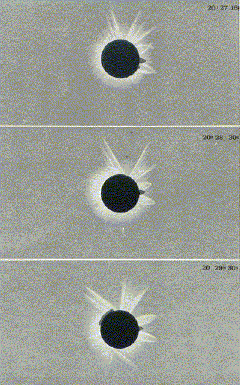
The Bellini Observatory on Mount Etna was completed in 1880, while in 1885, again upon his recommendation, the Catania Observatory was established. This was the first Astrophysical Observatory in Italy. After Tacchini's departure, solar observations in Palermo were continued by Annibale Riccò, who later became the first Director of the Catania Observatory.
___________________
From the beginning of the XX century, the relevance of the Palermo Observatory started declining once again. The institution had to wait some 70 years. But there it was, and it waited. Then, the social, economic, technological evolution of the western world called for a new season of the institution.
At that time Giuseppe Salvatore Vaiana came to Palermo. He was the right man in the right place at the right
time. He brought here his unlimited energy, his record of achievements, his direct involvement in the birth of
imaging X-ray Astrophysics. Being back home, returning to his very roots, had prompted him to fresh and powerful
inspiration. The new season started.